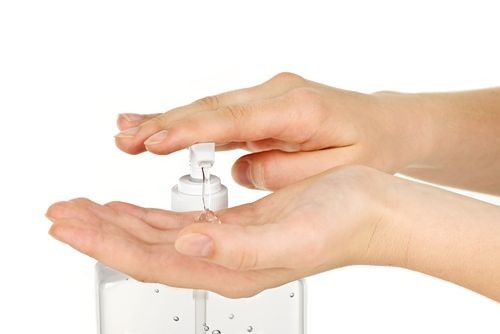Hand Sanitizers In Classrooms Don't Stop Kids From Getting Sick Or Being Absent

Hand sanitizers hang on key chains on the backpacks of schoolchildren, perfumed with fruity fragrances in tiny bottles stuffed into lunchboxes, and are mounted on the walls of classrooms and offices everywhere. The omnipresence of self-sanitation is there to encourage good hygiene routines for young children to learn in a safe and germ-free environment. But is it working? Researchers from the University of Otago, New Zealand set out to find if hand sanitizing changes the way colds, flus, and other viruses are spread throughout the classrooms, or if disinfectants don’t really make a difference. They published their study in the journal PLOS Medicine.
Managing health risks among children who are publicly taught is difficult because day after day they return home with different germs and come from varying hygiene practices at home, which is why hand sanitizers filled with antibacterial gels were thought to be an easy solution. Reducing the amount of times children come into contact with each other is nearly impossible throughout their group activities, shared art and work supplies, and their designated recess, snack, and lunchtimes.
Researchers examined the rate of school absences due to illness in 2,443 New Zealand children in 68 primary schools. Each of the 5-year-old children in the participating schools received a 30-minute long in-class hand hygiene education lesson. They taught the children to use the alcohol-based hand sanitizer dispensers that were installed into their classrooms after they sneezed or coughed and on the way out of the classroom during breaks and lunchtime. After two winter seasons, the researchers were surprised to find there wasn’t any difference between the classrooms they taught and requested hygiene routines, and those that carried on without special instructions or hand sanitizers in their classroom.
"The provision of hand sanitizers in addition to usual hand hygiene in primary schools in New Zealand did not prevent disease of severity sufficient to cause school absence," the study’s authors wrote.
These hand sanitizers may not be working as well as parents, teachers, and health officials hoped to reduce child-to-child transmission of illnesses. The Centers for Disease Control and Prevention still recommend using alcohol-based hand sanitizer if soap and water are not available. However, they note the sanitizers with an alcohol concentration between 60 to 95 percent are more effective at killing germs than lower concentrations.
Source: Reeves L, Brunton C, Poore M, Audas R, McKenzie JE, and Priest P. Hand Sanitiser Provision for Reducing Illness Absences in Primary School Children: A Cluster Randomised Trial. PLOS Medicine. 2014.
Published by Medicaldaily.com



























